
The Queen Ann furniture style, sometimes also referred to as ‘Late Baroque’, can be seen as a distinct style in it own right, but also as part of a continuum and evolution in furniture design.
It is a style that distinctively sits between the William and Mary style that came before, and the Chippendale styles that proceeded it.
Queen Ann’s reigned for only 12 years from 1702 until 1714. Yet the style of furniture known as “Queen Ann” continued to be made well after the her death. Indeed the label was applied 100 years or so posthumously.
A unique selection of antique furniture for sale.
So how, when Queen Ann was on the throne for such a short time, did this attribution come about?
We will return to this fascinating question. But for context, let us first look at the life and reign of Queen Ann.
A protestant, like her sister Mary; Queen Ann ruled during a relatively stable and prosperous time, politically speaking. However her personal life was less plain sailing. She was plagued by ill health, and lived with gout most of her life.
Later she suffered with extreme obesity, something which was significantly airbrushed over by her portrait painters. Who perhaps in a sense, took on the role of today’s social media filters, and flattering image editing apps, out of fear of reprimand.
She suffered many tragic still births and miscarriages, throughout her adult life. None of her five live-born children survived, despite her being almost constantly pregnant. Only one of her offspring lived beyond early childhood, and died at 11 years old.
She was married to Prince George of Denmark by an arranged, and apparently loveless, marriage. It was widely rumoured that she was in a relationship with a close lady friend for much of her adult life.
So with no clear heir, Queen Ann’s reign marked the end of the Stuart period. After her death, the crown passed to George I, her German cousin, and to the House of Hanover.
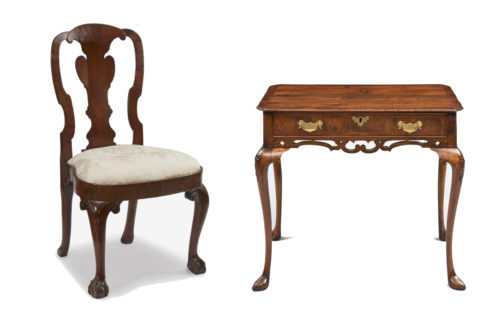
Despite her life being marred by tragedy, Ann is said to have been a good Queen. She allowed and encouraged science, and the arts, to really flourish during her reign. It is therefore unsurprising that furniture design also flourished.
It was a significant era in the evolution of our modern party political system also. In this period the 2 party system of the Whigs and Tories strengthened and solidified, moving Britain further down the road towards an established constitutional monarchy.
The Queen Ann style really built upon the earlier developments in furniture design brought about by William and Mary. In the William and Mary era, William of Orange brought Dutch designers and makers from Holland, changing the trajectory of furniture design in the United Kingdom.
During the reign of William and Mary furniture became far more comfortable, luxurious and elegant. Queen Ann design built upon this. The use of curving designs, and distinctive cabriole legs, emerged in the elegant and comfortable furniture of the Queen Ann period.
The emblem of the shell in decorative relief became very popular during the Queen Ann period, which in turn went on to influence Chippendale’s decorative reliefs; and some might argue, some of the design in the later Neoclassical period.
And of course wingback chairs emerged for the first time.
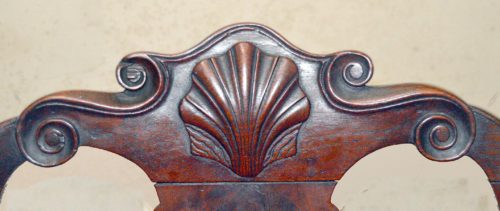
Design became altogether lighter and more playful somehow, mirroring changes in society. As society became a little more casual and interactive, new furnishings were required for social engagements.
Furniture that could be moved around with greater ease, serving the needs of its users, was the order of the day.
Queen Ann design is also far more restrained than its neighbouring Rococo. Its influence can be felt upon Rococo in the curving forms. However Queen Ann lacks the highly ornate carving of Chippendale et al. It doesn’t go much further than the odd shell and understate flourish here and there.
In reality Queen Ann describes a movement in furniture design, albeit one that carried on, and can even be felt today. It didn’t strictly cross over exactly with the reign of Queen Ann, it went on for far longer. But the romanticised version of her personality and presence can be felt in the design.
There is a definite imprint of her style and character. There is something strong and feminine about the movement. Queen Ann furniture is at once sturdy, curvy, playful, and comfortable.

Whilst Queen Ann reigned from 1702 until 1714, the movement started a little earlier and continued until around 1760, crossing over with Chippendale, and other styles, before the straight lines of the Georgian era took hold.
The Queen Ann period cross over with what is known as ‘The Age of Walnut’ and many Queen Ann pieces are crafted from Walnut, but also other woods, and of course lavish and comfortable upholsteries.
Queen Ann was popular in the US, where it followed its own evolution, and influenced the development of design, and later an architectural movement.
There have been several revival moments in history, or rather it echoes have resurfaced time and again, and can certainly be felt today.
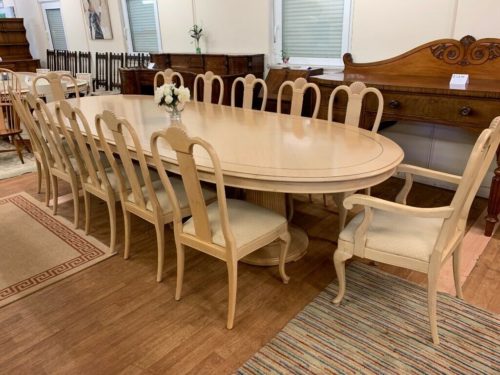
We only have to look at this modern dining set to see how the Queen Ann style is still influencing us today. When I see these chair backs, I am instantly put in mind of the distinctive head pieces that she wore.
It is hard to emphasise enough the subtle but powerful importance of this design movement.
Chippendale and Rococo wouldn’t have evolved as they did without the comfort and curves of Queen Ann. Even the fascias of Neoclassicism as times bear resemblance to the fanning lines of a clam shell.
Im sure that Queen Ann would be happy to know that her echoes are still felt so strongly within furniture design today in our modern world. Her reign may have been reasonably short lived, but she certainly isn’t forgotten.
A unique selection of antique furniture for sale.
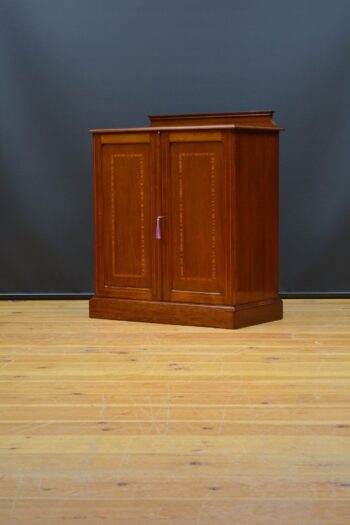 Edwardian Mahogany Two Door Cabinet Low
£1,395.00
Edwardian Mahogany Two Door Cabinet Low
£1,395.00
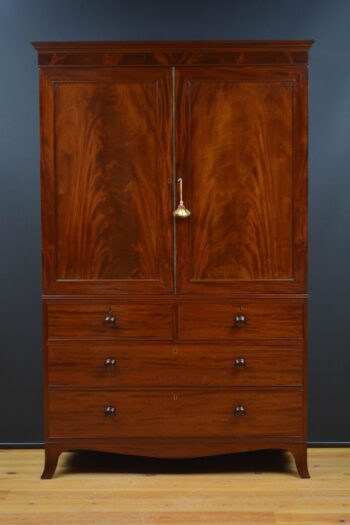 English George III Mahogany Linen Press
£3,500.00
English George III Mahogany Linen Press
£3,500.00
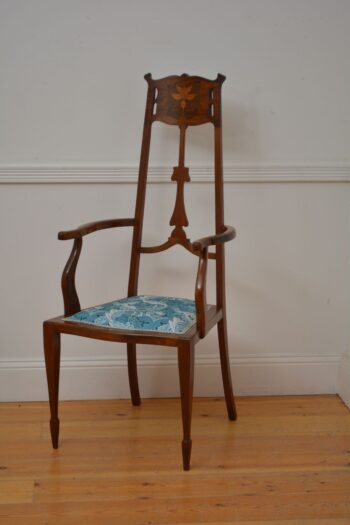 Art Nouveau Mahogany Armchair / Side Chair
£1,185.00
Art Nouveau Mahogany Armchair / Side Chair
£1,185.00
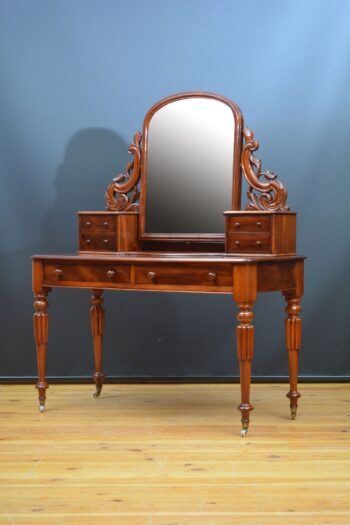 English Victorian Mahogany Dressing Table
£1,695.00
English Victorian Mahogany Dressing Table
£1,695.00
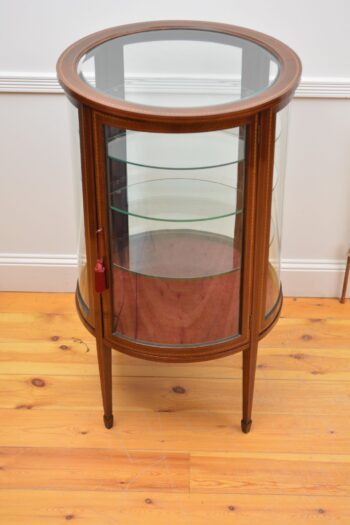 Large Cylindrical Edwardian Display Cabinet
£1,850.00
Large Cylindrical Edwardian Display Cabinet
£1,850.00
| Cookie | Duration | Description |
|---|---|---|
| cookielawinfo-checbox-analytics | 11 months | This cookie is set by GDPR Cookie Consent plugin. The cookie is used to store the user consent for the cookies in the category "Analytics". |
| cookielawinfo-checbox-functional | 11 months | The cookie is set by GDPR cookie consent to record the user consent for the cookies in the category "Functional". |
| cookielawinfo-checbox-others | 11 months | This cookie is set by GDPR Cookie Consent plugin. The cookie is used to store the user consent for the cookies in the category "Other. |
| cookielawinfo-checkbox-necessary | 11 months | This cookie is set by GDPR Cookie Consent plugin. The cookies is used to store the user consent for the cookies in the category "Necessary". |
| cookielawinfo-checkbox-performance | 11 months | This cookie is set by GDPR Cookie Consent plugin. The cookie is used to store the user consent for the cookies in the category "Performance". |
| viewed_cookie_policy | 11 months | The cookie is set by the GDPR Cookie Consent plugin and is used to store whether or not user has consented to the use of cookies. It does not store any personal data. |